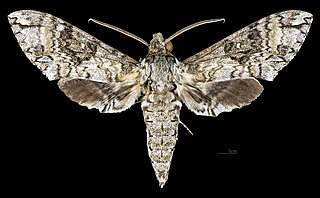
Manduca brontes is a species of moth in the family Sphingidae first described by Dru Drury in 1773. It is known from Jamaica, Cuba, Haiti, Puerto Rico, the Cayman Islands, the Dominican Republic and Suriname.

Manduca wellingi is a moth of the family Sphingidae. It is found from Mexico to Belize.

Manduca muscosa, the muscosa sphinx, is a moth of the family Sphingidae.

Manduca occulta, the occult sphinx, is a moth of the family Sphingidae.
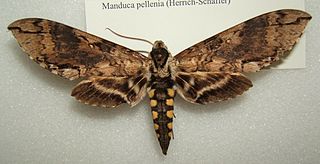
Manduca pellenia is a moth of the family Sphingidae. It is known from Mexico, Belize, Guatemala, Nicaragua, Costa Rica, Panama, Colombia and Ecuador.

Manduca andicola is a moth of the family Sphingidae first described by Walter Rothschild and Karl Jordan in 1916. It is found from Central America to Peru, Ecuador, Bolivia and Argentina.

Manduca boliviana is a moth of the family Sphingidae. It is known from Bolivia.
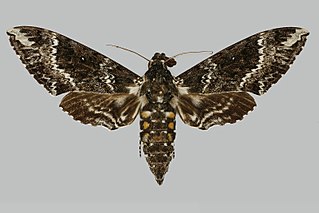
Manduca camposi is a moth of the family Sphingidae. It is known from Ecuador.

Manduca caribbeus is a moth of the family Sphingidae. It is known from Haiti and the Dominican Republic.

Manduca chinchilla is a moth of the family Sphingidae. It is known from Peru.

Manduca clarki is a moth of the family Sphingidae first described by Walter Rothschild and Karl Jordan in 1916. It is known from Brazil, Colombia, Ecuador, Peru and Bolivia.

Manduca violaalba is a moth of the family Sphingidae first described by Benjamin Preston Clark in 1922.

Manduca manducoides is a moth of the family Sphingidae.

Manduca mossi is a moth of the family Sphingidae. It is known from Peru, eastern Ecuador and Bolivia.

Manduca prestoni is a moth of the family Sphingidae. It is known from Brazil, Ecuador and Bolivia.

Manduca reducta is a moth of the family Sphingidae. It is known from Peru and Bolivia.
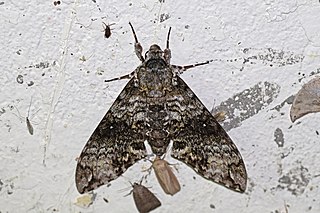
Manduca schausi is a moth of the family Sphingidae. It is found from Mexico, Guatemala, Nicaragua and Costa Rica to Brazil, Argentina and Bolivia.

Manduca tucumana is a moth of the family Sphingidae.
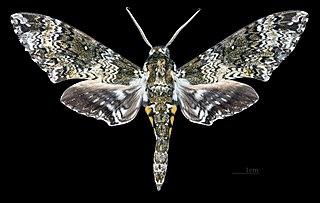
Manduca sesquiplex is a moth of the family Sphingidae. It is known from Mexico, Costa Rica and Nicaragua.

Manduca scutata is a moth of the family Sphingidae.





















